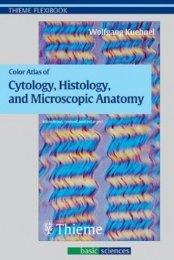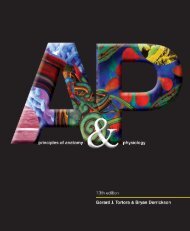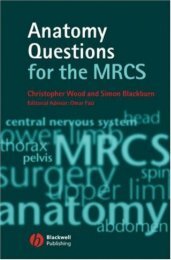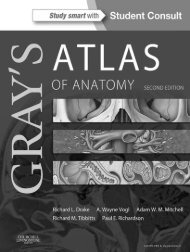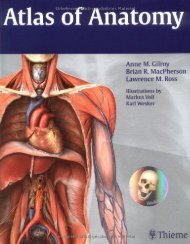urinalysis and body fluids
You also want an ePaper? Increase the reach of your titles
YUMPU automatically turns print PDFs into web optimized ePapers that Google loves.
©2008 F. A. Davis<br />
CHAPTER<br />
3<br />
Introduction to<br />
Urinalysis<br />
LEARNING OBJECTIVES<br />
Upon completion of this chapter, the reader will be able to:<br />
1 List three major organic <strong>and</strong> three major inorganic<br />
chemical constituents of urine.<br />
2 Describe a method for determining whether a<br />
questionable fluid is urine.<br />
3 Recognize normal <strong>and</strong> abnormal daily urine<br />
volumes.<br />
4 Describe the characteristics of the recommended<br />
urine specimen containers.<br />
5 Describe the correct methodology for labeling<br />
urine specimens.<br />
6 State four possible reasons why a laboratory<br />
would reject a urine specimen.<br />
7 List 10 changes that may take place in a urine<br />
specimen that remains at room temperature for<br />
more than 2 hours.<br />
8 Discuss the actions of bacteria on an unpreserved<br />
urine specimen.<br />
9 Briefly discuss five methods for preserving urine<br />
specimens, including their advantages <strong>and</strong> dis -<br />
advantages.<br />
10 Instruct a patient in the correct procedure for<br />
collecting a timed urine specimen <strong>and</strong> a midstream<br />
clean-catch specimen.<br />
11 Describe the type of specimen needed for optimal<br />
results when a specific <strong>urinalysis</strong> procedure<br />
is requested.<br />
KEY TERMS<br />
anuria<br />
catheterized specimen<br />
chain of custody<br />
fasting specimen<br />
first morning specimen<br />
2-hour postpr<strong>and</strong>ial specimen<br />
midstream clean-catch<br />
specimen<br />
nocturia<br />
oliguria<br />
polyuria<br />
suprapubic aspiration<br />
three-glass collection<br />
timed specimen<br />
■ ■ ●<br />
History <strong>and</strong> Importance<br />
Analyzing urine was actually the beginning of laboratory<br />
medicine. References to the study of urine can be found in the<br />
drawings of cavemen <strong>and</strong> in Egyptian hieroglyphics, such as<br />
the Edwin Smith Surgical Papyrus. Pictures of early physicians<br />
commonly showed them examining a bladder-shaped<br />
flask of urine (Fig. 3-1). Often these physicians never saw<br />
the patient, only the patient’s urine. Although these physicians<br />
lacked the sophisticated testing mechanisms now<br />
available, they were able to obtain diagnostic information<br />
from such basic observations as color, turbidity, odor, volume,<br />
viscosity, <strong>and</strong> even sweetness (by noting that certain specimens<br />
attracted ants). These same urine characteristics are still<br />
reported by laboratory personnel. However, modern <strong>urinalysis</strong><br />
has exp<strong>and</strong>ed beyond physical examination of urine to<br />
include chemical analysis <strong>and</strong> microscopic examination of<br />
urinary sediment.<br />
29






